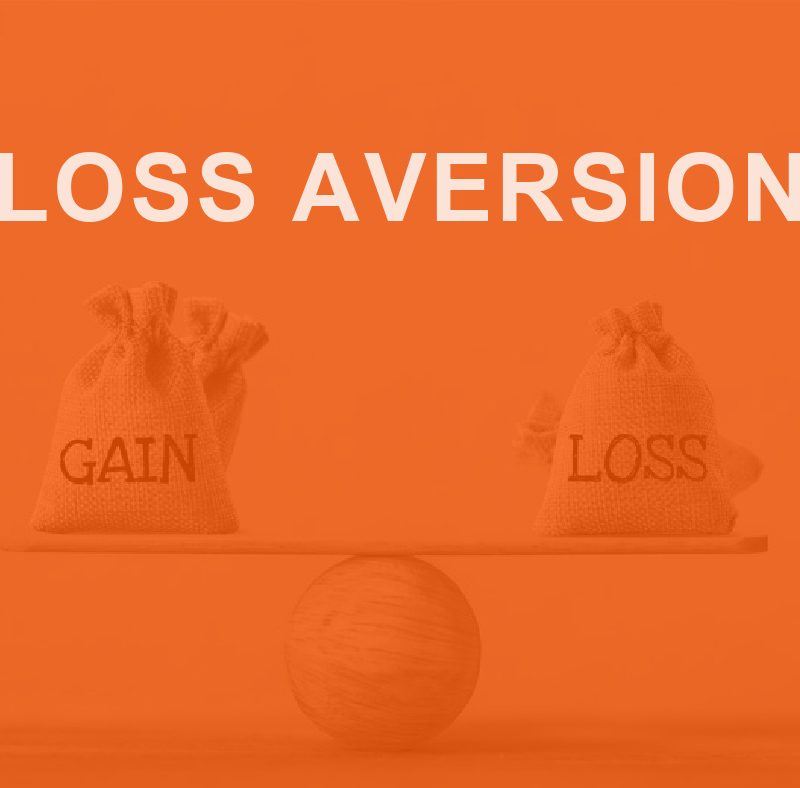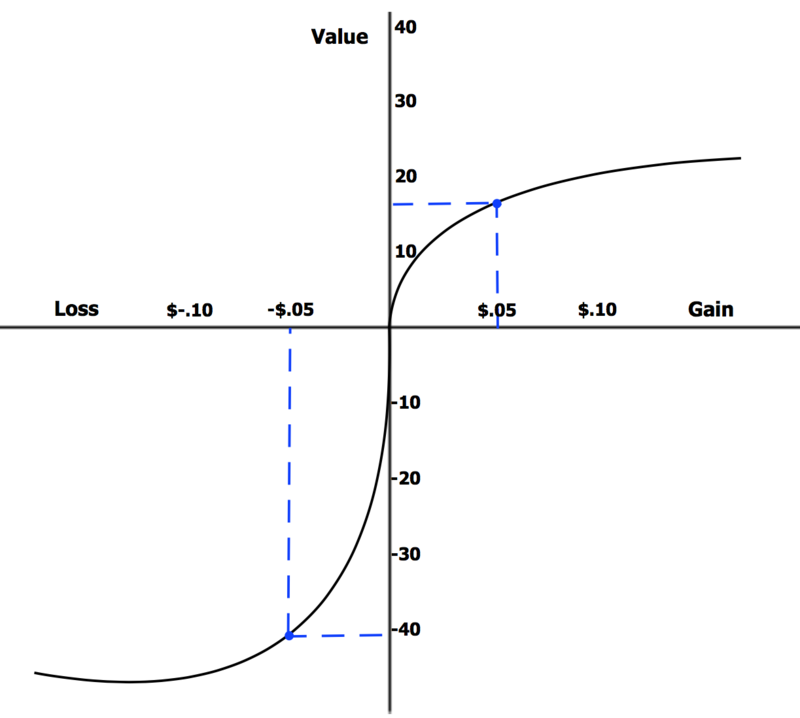
The concept of loss aversion may not be a familiar one to everyone in the fitness world but it can certainly be applied across many disciplines, especially health and fitness.
According to Mark Twain “The secret to getting ahead is getting started”..or maybe it was Stephen King.. or Abraham Lincoln. Regardless, when it comes to starting new exercise habits there are many barriers. Some are relatable barriers like access to fitness equipment, long hours at work, or taking care of the family. Sometimes obstacles are less tangible like, “my friends don’t exercise” or “If I can’t run for an hour what’s the point?”.
As fitness professionals, it’s important to understand anatomy, physiology, and even nutrition. But understanding human behavior and motivation is just as valuable to being a successful personal trainer. Loss Aversion, the tendency to avoid losses at a higher rate than we seek gains, is an important factor that can prevent potential clients from taking that first step.
Losses Loom Larger Than Gains
Loss aversion was first presented as an economic term in a 1979 paper by Daniel Kahneman and Amos Tversky (1992), two Israeli professors who were later praised for pioneering what came to be known as behavioral economics. Kahneman and Tversky also coined other related behavioral concepts like framing and the prospect theory, both related to loss aversion.
To illustrate loss aversion simply, imagine these scenarios:
A teenager gets $50 allowance to do her chores every week. In the first scenario, she has already been given the money in advance, if she fails to do her chores, she has to give it back to her parents. In the second scenario, she starts with $0, if she completes her work her parents will pay her $50. Now, in both scenarios she makes the exact same amount of money, for the exact same amount of work, but according to Kahneman and Tversky’s research the subject will feel the pain of losing her $50 twice as much as the joy of gaining $50.

What this means for us as fitness professional is that often people hesitate to start new, healthy habits, or invest themselves in fitness routines, not because of a lack of interest in reaching their wellness goals, but out of fear of not being able to achieve those goals.
The Things We Already Have Seem More Valuable
Richard Thaler, Nobel prize winner for his Behavioral Economics work on The Endowment Effect, discovered other “anomalies” in our behavior (1991). The endowment effect suggests that things are more valuable to us, simply because we already have them. In a popular paper by Thaler (co-written by Kahneman) they discuss a colleague who collects wine. One particular bottle in their colleagues collection was purchased a few years ago for $10, but gained value over time, and was worth $200 at the time the paper was written. When asked, their colleague said “he would not be willing to sell for the new market price of $200 nor would he ever buy it for more than $10”.
According to common economic law he should have been willing to sell for almost any price as long as it’s higher than what he is willing to pay for it, especially when it is a 20X increase. But, the endowment effect, loss aversion, and the status quo bias are working to influence his motivations to keep the bottle.
The status quo bias, originally introduced by Samuelson and Zeckhauser (1988), suggests exactly what it sounds like… people tend to stick with what they already have when given another option. There are many instances when change can be an obvious benefit, but even in some blatant situations, the fear of losing what we already have keeps us from changing.
Make The “Wins” Happen Often
When it comes to exercise, all of the barriers of daily life, and the confusion set by the many various marketing claims and professional opinions thereof, make for a very intimidating, confusing, and possibly fearful venture. So how do we make it easier for our community to invest in a new fitness routine, or maybe even leverage loss aversion to work for us?
An old fashion “exercise partner” is one of the best ways to make exercise habits a reality, regardless of what ails. Accountability, feedback, and companionship can help to curb any fear or hesitancy one might have. It can even motivate us to get to our workout on days that we would rather sleep in. A professional “exercise partner” like a personal trainer or coach can provide that extra incentive and help to reduce any friction caused by lack of knowledge or plan. Specific planning has been proven to increase adherence in wellness and fitness programs.
When it comes to planning, as we know from proper goal-setting theory, it’s important to set many short and long term goals, with achievable parameters. In her article for psychologytoday.com, Talya Miron-Shatz (2011) wrote about research that her students did at The Wharton School. Various groups were provided with different goals for the amount of activity they should get each day. The subjects were provided with watches to track their activity. Those who were prescribed a higher amount of steps and activity performed a higher amount, on average, at the end of the program.
What the students determined is that setting proper goals were essentially an “endowment” for each subject. Meaning: if subject “A” was part of the “15 miles a week” group, than anything less than 15 miles would be perceived as a loss and they were motivated to “not lose”. It’s important to keep in mind that the subjects of this study were college students who volunteered. Personality and other pertinent circumstances will always determine how motivated or discouraged someone can be by their goals.
Probably the most important takeaway from understanding loss aversion regarding fitness clients and exercise habits is that we create challenging and engaging routines, while trying our best to avoid any sense of loss or defeat. Setting goals that are “close” and achievable, while framing our endeavors in a way that maintains positivity is important. When using resistance, repetition OR time-based exercises be strategic about the options you provide and the order you present them in. Especially for those who are new to a fit lifestyle, it is important to make sure the “wins” happen often, and are noticeable.
References
Kahneman, D. & Tversky, A. (1992). “Advances in prospect theory: Cumulative representation of uncertainty”. Journal of Risk and Uncertainty. 5 (4): 297–323.
Daniel Kahneman, Jack L. Knetsch, and Richard H. Thaler (1991) Anomalies: The Endowment Effect, Loss Aversion, and Status Quo Bias, Journal of Economic Perspectives—Volume 5, Number 1—Winter 1991—Pages 193–2
William Samuelson & Richard Zeckhauser (1988) ,Status quo bias in decision making, Journal of Risk and Uncertainty Journal of Risk and Uncertainty volume 1, pages 7–59(
Talya Miron-Shatz Ph.D., How Behavioral Economics Can Make You Exercise, Oct 29, 2011psychologytoday.com






